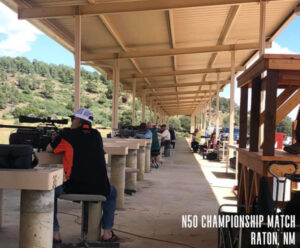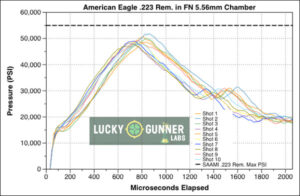Since its official adoption in 1994, the M4 Carbine has gained momentum on the world stage. The weapon is known as Carbine, Caliber 5,56 mm, M4. It has been adopted by dozens and dozens of nations and armed forces around the globe. A plain-Jane Colt M4A1. The M4 pattern of AR-15 is extremely popular amongst armed citizens and non-state actors, as well as militaries and law enforcement agencies. Many Americans choose a close replica of the M4 even though more modern options are now available. It’s partly due to the logistical challenges of reequipping all of the U.S. Army. But it’s also because the compact, lightweight, and battle-proven M4 carbine is still a useful tool in the arsenal of the diverse military. The military has used carbines for centuries. They are shorter, lighter, more portable, and often smaller-caliber rifles. These were historically issued to cavalry soldiers who needed lighter versions of infantry rifles to use on horseback. An M16A2 rifle beside an M4 carbine. Photo: Wikipedia. Based on the success of WWII’s M1 Carbine, the U.S. Military asked for a carbine version of the M16 in 1964. The first attempts to miniaturize it were the Colt 607 (the “Dissipator,” although it was never called that). The 605 was almost identical to the standard M16, except for its 15-inch barrel that was cut down. However, the 607 was a more radical modification. The 607 featured a 10-inch barrel that was cut down to match the handguard, an early-generation folding buttstock (made from a modified M16 stock), and a moderator at the muzzle. The 607’s changes reveal how the M16 evolved to the M4 carbine. These experimental carbines did not have a standard grip and some features were changed. Retro Black Rifle. The Colt 607 & 605 were used in the Vietnam War’s early years, but they also had several problems, mainly related to reliability when firing full-auto. The shorter barrel reduces dwell time and causes cycling problems. Colt began work on the XM177 (aka the Colt Commando Series) to solve these problems. The first versions of the Colt 609/XM177E1 were the Colt 610/XM177 and the Colt 609/XM177E1 (the only difference being that the 609 had a forward assist). They featured 10-inch barrels with a new design for an adjustable two-position handguard, as well as a redesigned muzzle device moderator. The moderator is now 4.5 inches instead of 3.5 inches on the 607 and accomplishes two important things. A Colt XM177E1 used in Vietnam. Retro Black Rifle. The first batch of XM177E1 carbines was reportedly delivered to U.S. Special Forces by 1967 (although experimental designs such as the 607 had been sent to be tested locally beforehand). The XM177E2 carbines were developed shortly thereafter, presumably due to reliability issues. This version was almost identical to its predecessor, but now featured an 11.5-inch-long barrel for improved reliability. While the term CAR-15 was first coined by Colt in the early 1970s, it has since become a generic and collective designation of this entire family of early carbine length AR-15s. The guns quickly became a staple of Vietnam-era Special Forces such as MACV SOG, which contributed to their early reputation as “cool guys” guns. The XM177E2 was a great gun, but it wasn’t perfect. It was effective and improved in many ways over the M16. Early-production M4 with A2-pattern upper and fixed carry handle. Photo: User SLN583 from Reddit. Originally designated as the XM4 in its development, the M4 carbine used a two-position adjustable XM177 stock with an A2-profiled barrel and a twist of 1:7 for the newly adopted ammunition. The barrel was extended to 14.5 inches with a carbine length gas system and an A2 birdcage-style flash hider. The first M4s were delivered with fixed M16A2 uppers. These were quickly replaced with the flat-top Picatinny top that would become the M4’s trademark. The Marine Corps was first to adopt the carbine (albeit in limited numbers) after the XM4 development was considered complete in 1987. The experimental XM4 became the M4 for the first time. This decision was based on the experience gained by many infantrymen during Operation Desert Storm, where they complained that the M16A2 was cumbersome when used in urban environments. This was further reinforced during the 1993 Battle of Mogadishu, when Delta Force members were happier with their CAR-15s compared to others who used full-length rifles. All of this led to an increase in the use of the M4 by all branches of the U.S. Armed Forces, until the M16 was eventually replaced as the standard infantry weapons for most branches. The M4 was replaced in practice before the Army made the official decision in 2010. An American soldier carrying an accessorized carbine in Iraq. By the time the M4 was adopted, it had undergone a few additional changes to its design. The XM4 had been deemed complete. The fixed carry handle upper was removed and replaced by the flat-top model, which features a Picatinny Rail for optics. This was probably inspired by what Delta Force operators did with their Colt 723s. The M16A2 was equipped with a three-round burst feature (standard on the M16A2), instead of the full auto. A heavier buffer for improved reliability was also developed, and the polymer furniture from the older CAR-15 was only slightly altered. An M4A1(Photo: Wikipedia) vs. a XM177E2(Photo: Retro Black Rifle). The stock, grip, and handguard are all different. The thicker M4 has two heat shields, instead of just one. The barrel profile was also changed to the M4/HBAR, with a ring machined in the barrel for mounting the M203 grenade-launcher. The only significant change, besides an optional new barrel that could better withstand heat stress from full auto fire, was the replacement of the three-round burst functionality with true full auto functionality. The M4 platform was further developed primarily through accessory programs, such as the SOPMOD (Special Operations Peculiar Modifications) kits. After the DoD adopted the M4A1 and M4 in 1994, the M16A2’s use began to diminish. The M4 was the de facto service weapon for the United States during the Global War on Terrorism, with the exception of Marines. Serbian antiterrorism police marching in M4 carbines. Photo: Wikipedia.Police and military units around the world are finding the M4 carbine lives up to its reputation as a lightweight, handy, versatile weapon that can fit into multiple roles with ease. Early international adopters received their first shipments as early as the late 1990s. New international contracts have been signed and completed in the last few years. Most NATO countries have M4 carbines in their arsenals, and many U.S. allies were outfitted with them at different times. In 2009, the US Military had acquired all the patents and rights to the M4 carbine. It then opened a bidding process to find a new provider. Colt’s financial troubles are not new. The company has been bankrupted and reorganized several times. It was no secret to the military that military contracts were the only thing keeping Colt alive. A genuine M4A1 by FN Herstal. Select-fire and only available for military purchases. They put out requests for proposal to find other suppliers. Fabrique Nationale Herstal in Belgium was awarded the majority of contracts to manufacture M4 carbines. FN would manufacture most of the M4 and M4A1 carbohydrates from 2013 to 2018 as well as parts to convert M4s into M4A1s. As previously mentioned, the U.S. Army brass have already decided to replace the M4 by what is currently referred to as the XM7. The M4 is not going to disappear overnight. With so many carbines in stock and so much ammunition, it’s safe to say that various U.S. Armed Forces will continue to use the M4 at least for the rear-echelon for many years. Outside the U.S. it is almost certain to be even longer. The AR-15 platform is now almost as well-established on the global stage as the Kalashnikov. And the M4 appears to be the preferred version of users around the world. It’s not leaving anytime soon. This is an FN M4 Carbine for the civilian market. This is as close to a clone as you can get. The 14.7-inch barrel features a pinned and welded birdcage A2, and the rifle comes with an ambidextrous switch, a folding back sight, and a Knight’s Armament RIS Quad Rail. The MSRP of $1,929 is a bit steep, but it’s the closest you can get without being a class III dealer. Palmetto state is a good option for a basic rifle. You can buy it, shoot it until something breaks, and then replace the parts. The Nitride M4 is a 16-inch HBAR barrel (albeit nitrided instead of phosphated or chrome-lined), a mil-spec trigger group and bolt carrier, and standard M4 polymer furnishings. You’ll have to provide the rear sight because it only comes as the front sight. The MSRP of the Nitride M4 is $899 but it is often on sale for less than $500. Colt also offers a civilian version of the M4 similar to the FN 15. The only difference is a 14.5-inch barrel that has been pinned and welded, and a semi auto trigger pack. Knight’s Armament RIS Rail and flip-up back sight (alongside fixed front sight base), along with one magazine, are included. The MSRP is $1499. You can get a genuine Colt at a lower price by choosing the standard M4 Carbine, which comes with a ribbed grip, Magpul BUI rear sights, and a 16″ barrel, for around $400 less. The M&P Sport II may not be a clone, but it is close enough for those looking for an M4-like gun that won’t break the bank. The M&P Sport II features a 16-inch straight-profile 4140 chrome-moly bar with an A2 flash hider. It also has a flat-top (with Magpul BUI) receiver, polymer furniture, and a fixed-front sight base. The stock and pistol grip have the same pattern as a real M4 carbine. However, the handguard has a skinnier look and is more reminiscent of an old CAR-15. It is one of most popular AR-15s available, and is available everywhere (except in ban states). It has a very affordable MSRP of $812, with street prices usually being even lower. The Bravo Company M4 Carbine Mod 2 clone is a SOPMOD Block 2 package with a 16″ M4/HBAR barrel (phosphate finished and chrome lined), fixed front sight base, BCM A2-style compensater and free-float BCM Gunfighter Quad Rail handguard. The receiver is flat-top, with no backup sight. BCM gunfighter furnishings are included. Street prices are approximately $1,500. The Mod 1 is also available for less (usually around $200 less) when paired with a BCM Gunfighter KeyMod Handguard. All other parts are identical.More military firearms:NEXT: Download Your Free Storm Tactical Printing Target Pack62 Printable MOA Drills – Rifle Range in YardsThis impressive target set from our friends at Storm Tactical includes62 printable targets for rifle and handgun ranges. The grids and bullseyes are measured in MOA. Subscribe to the Gun Digest newsletter and we will send you your print-at home target pack immediately. Enter your email below.

Sunday Gunday: Wicked Accurate 6mmBR Tack-Driving Tubegun
Sunday Gunday: Wicked Accurate 6mmBR Tack-Driving Tubegun ( June 22nd, 2025 ) However, we wanted to reprint the article for 2025 to honor our long-standing connections with gunman Joe Friedrich
















